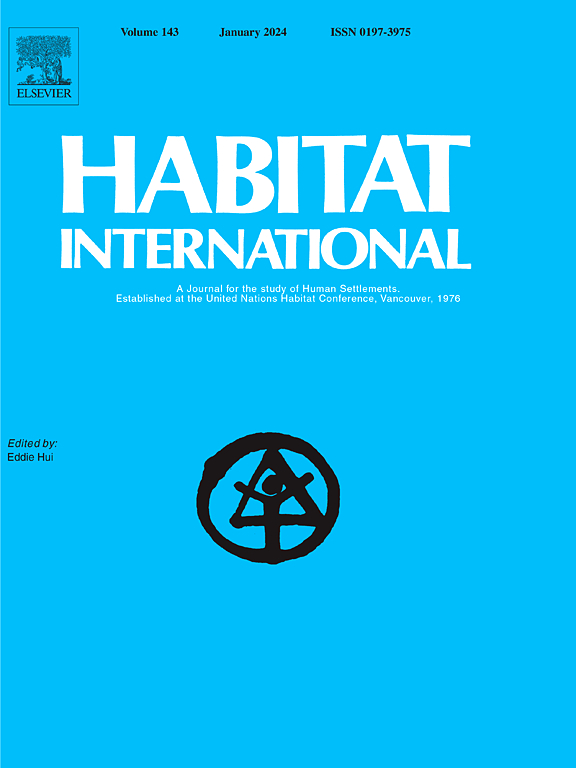Unpacking migrants' social integration: The mediating effect of hierarchical migration in the context of China
IF 6.5
1区 经济学
Q1 DEVELOPMENT STUDIES
引用次数: 0
Abstract
Internal migrants in China, similar to international immigrants, frequently confront barriers that hinder their integration into their destination cities. Improving the social integration of these migrants has become a central focus for both policy-makers and academia, forming an essential element of China's new urbanization strategy. Despite the mounting scholarly interest in this topic, existing studies primarily focus on examining the influence of individual characteristics and destination attributes on migrants' social integration, but often neglect migrants' diversifed migration patterns along the urban hierarchy, which may affect the degree of social integration achieved by migrants in their chosen destination. This study examines how migrants' demographic and socio-economic attributes are associated with their hierarchical migration pattern and thereby affect their social integration based on the data from the 2017 China Migrants Dynamic Survey. The results reveal a nuanced association between hierarchical migration (the difference in city tiers between the place of origin and destination) and social integration, characterized by a distinct nonlinear, inverted "U" shape. Importantly, this study underscores the pivotal mediating role of hierarchical migration. Individuals with different characteristics (age, gender, married, higher educational attainment, Chinese Communist Party membership, and urban hukou) made different migration choices, resulting in varying levels of social integration. Specifically, migrants who are married and possess higher educational credentials tend to move to bigger cities, which would hinder their overall social integration. This study deepens our understanding of migrants' social integration by highlighting the pivotal role of hierarchical migration, which can be traced back to a significant imbalance of regional development.
拆封流动人口的社会融合:中国背景下等级流动的中介效应
与国际移民一样,中国的国内移民经常遇到阻碍他们融入目的地城市的障碍。改善农民工的社会融合已经成为政策制定者和学术界关注的焦点,成为中国新型城镇化战略的重要组成部分。尽管对这一主题的学术兴趣日益浓厚,但现有的研究主要集中在考察个体特征和目的地属性对移民社会融合的影响,而往往忽视了移民沿着城市层级的多样化迁移模式,这可能会影响移民在其选择的目的地实现的社会融合程度。基于《2017年中国流动人口动态调查》数据,研究了流动人口的人口属性和社会经济属性如何与他们的分层迁移模式相关联,从而影响他们的社会融合。研究结果揭示了层级迁移(原籍地和目的地之间城市层级的差异)与社会融合之间的微妙联系,其特征是明显的非线性倒“U”形。重要的是,本研究强调了等级迁移的关键中介作用。不同特征(年龄、性别、婚姻、受教育程度、中国共产党党员和城市户口)的个体做出了不同的迁移选择,导致了不同程度的社会融合。具体来说,已婚并拥有高等教育证书的农民工倾向于搬到更大的城市,这将阻碍他们的整体社会融合。本研究通过强调等级迁移的关键作用,加深了我们对移民社会融合的理解,这可以追溯到区域发展的显著不平衡。
本文章由计算机程序翻译,如有差异,请以英文原文为准。
求助全文
约1分钟内获得全文
求助全文
来源期刊

Habitat International
Multiple-
CiteScore
10.50
自引率
10.30%
发文量
151
审稿时长
38 days
期刊介绍:
Habitat International is dedicated to the study of urban and rural human settlements: their planning, design, production and management. Its main focus is on urbanisation in its broadest sense in the developing world. However, increasingly the interrelationships and linkages between cities and towns in the developing and developed worlds are becoming apparent and solutions to the problems that result are urgently required. The economic, social, technological and political systems of the world are intertwined and changes in one region almost always affect other regions.
 求助内容:
求助内容: 应助结果提醒方式:
应助结果提醒方式:


